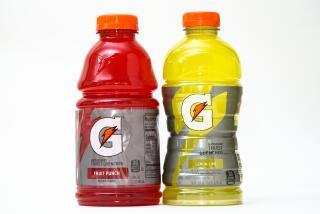Subcompacts : Innovators Create Super-Slim Cases of Highly Concentrated Pressed Powders
- Share via
THE COSMETICS industry is getting literal about compacts. The newest trend in makeup packaging is ultra-thin compacts that are only slightly thicker than credit cards.
“Women want slimmer, sleeker compacts,” says Jill Scalamandre, Revlon’s group director for product development, citing market research and focus-group studies. “When a woman carries at least three compacts in her handbag, it can get heavy. When she carries six in her travel case, it’s overwhelming. Cases needed to be streamlined,” Scalamandre says.
Ira Levy, senior vice president for corporate marketing and design at Estee Lauder, says that the Japanese have been leaders in developing the new compacts because “small is a necessity in Japan. Just look at what they did with cars and computers.”
Wafer-thin compacts have been sold in Japan by Revlon-Japan, Pola and Shiseido for more than a year. Revlon will begin marketing a collection of eye shadows and cheek colors, called the MicroChip line, in the United States in September, Scalamandre says.
To enable function to follow this new form of makeup packaging, highly concentrated eye and cheek colors had to be developed. Traditional formulations could not be packaged in enough quantity to make the compacts economical. Using Japanese equipment that compresses powders to a degree not yet possible in traditional American makeup manufacturing, Revlon developed powders in colors so concentrated that a three-month supply of eye shadow can be encased in the slim compact, Scalamandre says. MicroChip eye-shadow cases will hold two or three colors and will be sold for $12.50 and $13.50, respectively. Blushers will be sold in single-shade compacts for $10. Prices are comparable to those of traditionally sized compacts.
Last year Beverly Hills cosmetics manufacturer Gale Hayman introduced miniature-sized cosmetics at prestige prices, and mass marketer Maybelline introduced mini-makeup packages for the teen market. Neither line incorporated the innovations necessary to provide amounts of makeup comparable to those in traditionally sized compacts, however. Hayman believes that reduced quantities serve a purpose. “Women rarely use up their makeup, so why have a drawer full of half-used product?” she asked when her line was introduced.
Will America be wooed by compact compacts? Since packaging is one of the most expensive aspects of selling makeup, manufacturers are hoping to prove that small is the big thing for fall.





